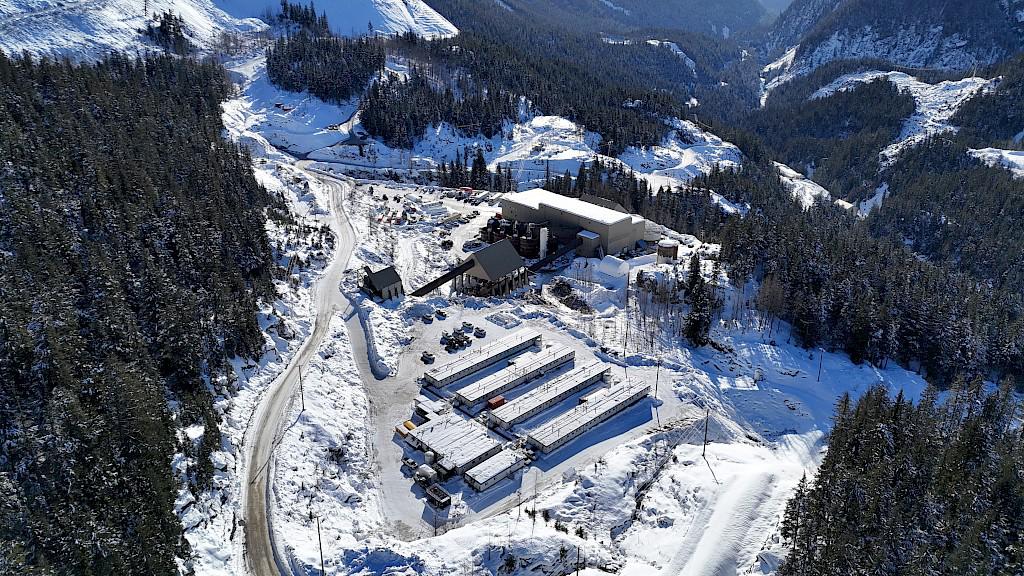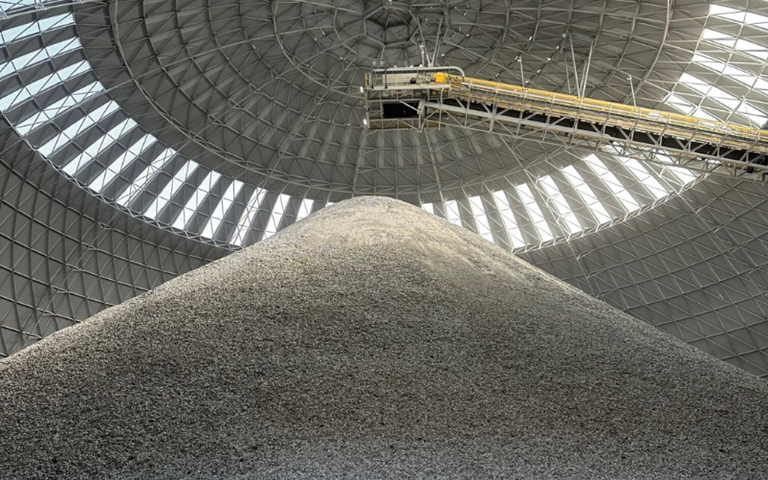Equinox Gold’s Greenstone project, which commenced the processing of ore on April 6, has over 1.5 million tonnes of ore stockpiled to use for early commissioning feed. Courtesy of Equinox Gold.
Welcome back to your weekly mining news recap, where we catch you up on some of the news you may have missed. This week’s headlines include BMO dropping its restrictions on coal-related loans, concerns over a diamond-free future in the Northwest Territories and last year’s global increase in coal-fired power generation.
Equinox Gold’s Greenstone project in Ontario began processing ore on April 6 and the company said that it plans to pour its first gold bar in May. The project, which is being developed as a 60/40 partnership between Equinox Gold and Orion Mine Finance Group, is expected to be one of the country’s largest gold mines and will produce roughly 400,000 ounces of gold. Commercial production is planned for the third quarter of this year.
Osisko Metals created a technical committee and tasked it with planning the dewatering of the Mount Copper open pit at the historic Gaspé Copper mine in Quebec, “as soon as possible.” This will permit “deeper in-pit” resource evaluation and geotechnical drilling of the pit and establish if it is possible to advance the project to commercial production. Osisko acquired the property in 2022, which last produced in 1999.
The winners of the 2024 CIM Awards were announced. They honour the exceptional achievements of more than 56 individuals and organizations in the minerals and metals industry. A new award category, the Indigenous Partnership Award, has been added this year, acknowledging the collaboration between communities and the mining industry seeking to advance Indigenous reconciliation. The awards will be presented on May 13 during the CIM-Caterpillar Awards Gala as part of the 2024 CIM Connect Convention and Expo.
BMO Bank has stepped back from its policy that limits loans to the coal industry, as reported by Bloomberg News. BMO is one of many banks and investment firms that have been tight-lipped about climate-related investment policies following more than two years of criticism from Republicans in the United States directed towards environmental, social and governance strategy adopted by the finance industry.
A report is raising concerns about the economic impacts of closing the Northwest Territories’ diamond mines in the next decade, as reported by Cabin Radio. The closure of the Diavik mine in two years, along with the potential for the Ekati and Gahcho Kué mines to close not too far in the future, could greatly impact the NWT’s communities and raises questions about its preparedness for the end of diamond mining.
Never miss another recap
Sign up for the latest news from CIM Magazine and the Canadian Institute of Mining, Metallurgy and Petroleum.
A recent survey revealed that in 2023, there was a two per cent increase in coal-fired power globally, the highest annual increase since 2016, as reported by Reuters. Even as many countries are beginning to shift away from coal, roughly 70 gigawatts of new coal power capacity was introduced globally last year, largely due to new coal-fired power plants in China.
The Bradshaw Research Institute for Minerals and Mining at the University of British Columbia has introduced a new program focused on mine closure. The Leadership in Sustainable Mine Closure Program will educate participants about various elements involved in the mine closure process, such as community engagement and Indigenous relations, as well as financial planning.
Acceleware Ltd. has been given the green light by Saskatchewan’s International Minerals Innovation Institute to advance its potash ore drying project to phase two. The next step will see the Calgary-based company further validate the use of radio frequency energy from the company’s Clean Tech Inverter (CTI) technology to dry potash ore, along with other minerals. Doing so will involve the design, construction and testing of prototype CTI-powered dryers at increasing scale.
Maureen McGuinness, director at Paterson & Cooke Canada Inc., spoke about the important but sometimes overlooked role that backfill plays in mine planning in an interview with Ailbhe Goodbody in the March/April issue of CIM Magazine. McGuinness explained that when it comes to designing mine plans, the step of backfilling is often glossed over, but if this step is planned properly early on in the mine design process, it can prevent some costly problems down the line. McGuinness is co-chair of the upcoming 14th International Symposium on Mining with Backfill, which will take place from May 12 to 15 in Vancouver, B.C.
The decommissioning of the K1 and K2 shafts at Mosaic’s Esterhazy potash complex in Saskatchewan had to be completed earlier than planned amidst pandemic-related supply chain issues and technical challenges brought on by flooding caused by unexpected brine inflows, as reported by Alexandra Lopez-Pacheco in the February issue of CIM Magazine. Thanks to a plan designed by engineers and consultants from RESPEC, Hatch and Thyssen Mining Construction, the entire timeline of the decommissioning project was successfully changed, with the complex being officially decommissioned in August 2022 after the team added backfill and capped the shafts.
That’s all for this week. If you’ve got feedback, you can always reach us at editor@cim.org. If you’ve got something to add, why not join the conversation on our Facebook, Twitter, LinkedIn or Instagram pages?




